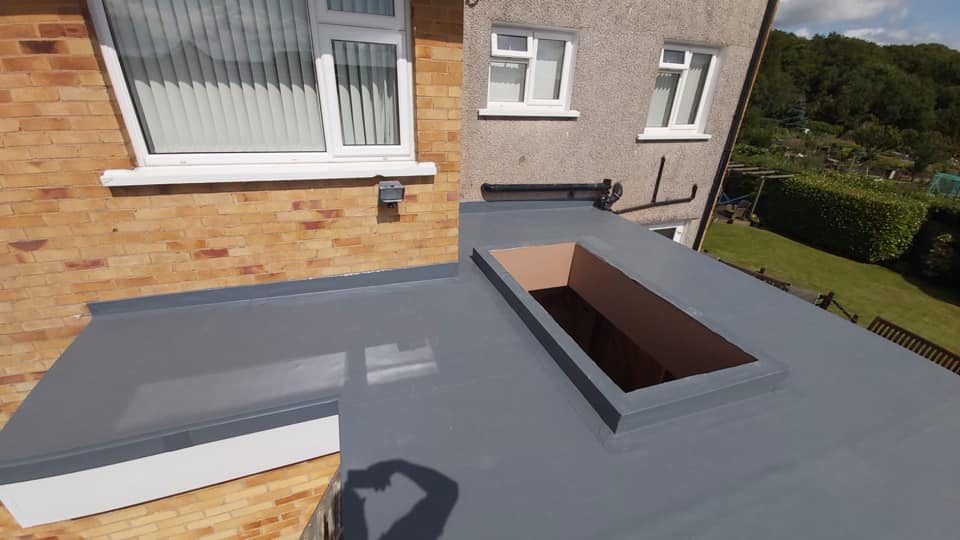Storms are a fairly regular occurrence in the UK and many flat roof owners are affected every year by storm damage. Severe gales, wind and rain blow in, they batter the country, and your home is right in the firing line. Before you know it, your flat roof is letting in water. As well as the damage it can cause to your property, you may be worried about the cost and inconvenience of getting it repaired. It will need to be fixed promptly if the damage isn’t going to be exacerbated by more bad weather.
You may also be worried about the potential cost of putting it right. Is your insurer guaranteed to pay out?
Buildings insurance will usually pay out to cover any financial loss caused by storm damage. However, it’s not always a completely straightforward process. The insurer will want to find out more about the severity of the storm as well as the condition of your roof before the storm hit.
READ MORE: Storm damage & emergency flat roof repair
The severity of the storm
Whereas to most homeowners, any weather that was severe enough to cause damage to your flat roof must be a storm, insurers don’t always see it that way. The Financial Ombudsman regularly deals with complaints between insurers and homeowners about what actually constitutes a storm.
Increasingly, insurers rely on the Beaufort Scale. This is used to measure the severity of a storm, categorising wind speed on a scale of 0-12. This sounds fair enough, and should be straightforward, but the scale sets a very high bar before it classifies a weather event as a storm. To be a storm, wind speeds need to reach 52knots, which is just under 60mph. This is number 10 on the Beaufort Scale, with gales and severe gales being at 8 and 9 respectively. This doesn’t take account of the fact that damage can occur to flat roofs at lower wind speeds. It also doesn’t reflect the common understanding of what constitutes a storm, which is why issues often arise.
According to the Financial Ombudsman, “a storm generally involves violent winds, usually accompanied by rain, hail or snow.” This leaves quite a bit of room for interpretation, and the Financial Ombudsman is often being called in to adjudicate in disputes.
The overall condition of your roof
For lots of reasons it’s important to maintain your roof. Not only does it make the roof more resilient against severe weather events, it also makes it less likely your insurer will refuse to pay-out should be you be a victim of storm damage. It also means that when damage does happen it’s usually completely unpreventable, and as a result of weather that meets the criteria of a storm on the Beaufort Scale. A well-maintained roof will last longer and will ultimately save you money.
If your building insurance company believes that your flat roof was already in a poor state of repair before the bad weather hit, they are very likely to refuse to pay out. It makes sense to check the state of your roof every summer in preparation for the poorer weather conditions later on in the year. Keeping dated photographs of the state of your roof can also be good practice and can be used to help strengthen any claim you need to make.
If your claim is turned down, but you are confident that your roof was in a reasonable state of repair before the storm hit, then you can make a complaint against your insurer to the Financial Ombudsman. However, it’s possible that they may agree with your insurer and uphold the original decision.
If this is the case all is not necessarily lost. You may be able to claim for some of your losses under the ‘accidental damage’ section of your buildings insurance policy. This will of course depend on the terms of your buildings insurance policy, and whether you’ve taken out accidental damage cover as part of it.
How does accidental damage insurance work?
Accidental damage is defined uniformly by most home insurance providers as any damage that occurs suddenly because of an unexpected and non-deliberate action. In simple terms, that usually means an unintentional one-off incident that causes damage to your property or its contents. So, you won’t be covered for any damage that’s the result of general wear and tear.
Snowfall
It’s not just wind that can cause sudden damage to your flat roof. Snow can also be a real hazard. Sudden, dramatic snowfall is not unknown in this country, and when it happens it can cause significant damage to your flat roof, right up to the point of total collapse.
If your roof collapsed after a sudden snow event, it’s likely you’ll be able to make a successful insurance claim. If, however, snow has fallen gradually over a number of days until it reaches a depth and weight that causes damage to your flat roof, then your claim is unlikely to be successful and you’ll have to pay for any repairs out of your own pocket. The insurer will argue that you had time to clear the snow yourself before it had chance to build up and cause the damage.
Protecting your property from extreme weather events
Whether it’s heavy rain, wind or snow, you shouldn’t rely on your property insurance to always pay out in the case of weather damage to your flat roof. It’s advisable to do all you can to keep your roof in a weather-tight condition before extreme weather makes its presence felt.
A flat roof inspection
As mentioned above, you should schedule a regular inspection of your flat roof, ideally before the bad weather hits. The life expectancy of any roof is dependent on a number of different variables and it’s important to spot potential issues before they have chance to cause problems.
You can carry out a basic flat roof inspection yourself. Here’s some of the issues you should look for:
- Ponding water – are pools of water developing when it rains? These are a sign of poor drainage.
- Deteriorating seals – caulking and tar can lose their effectiveness over time.
- Seams that have become unsealed – wherever there’s a gap in a seam, water will find a way in.
- Build-up of mould or mildew.
- Leaves and debris.
- Punctures, cracks and blistered areas.
- Clogged drains or gutters
While some of these issues, such as leaves and clogged drains, can usually be tackled by the homeowner, some will need specialist attention. A professional flat roof inspection will be more thorough, and you should ideally schedule one of these every two to three years, or annually if you’re not confident about inspecting the roof yourself. If you live in an area prone to high winds or heavy rain, a bi-annual inspection may be necessary.
Keeping your flat roof weatherproof
At Sureseal, we have extensive experience in ensuring flat roofs can handle anything the British weather can throw at them. When installed correctly, flat roofs are reliable and long-lasting. They do, however, require a greater level of maintenance than other forms of roof. With a regular approach to inspection and maintenance they can be entirely durable.
It’s not just about looking for leaks. Badly maintained roofs can be prone to erosion and structural weakness. Over time the roofing membrane can degenerate. At Sureseal we carry out regular flat roof inspections for our clients, spotting and rectifying issues before they have chance to become a problem.
We install flat roofs in a wide variety of domestic and commercial settings, creating watertight, long-lasting and cost-effective solutions for our clients. We aim to permanently eliminate some of the issues associated with traditional flat roof coverings. We can replace an existing flat roof, with a highly effective watertight roofing solution that can last for years to come with minimal maintenance.
If your flat roof has succumbed to storm damage, or you want to ensure that it doesn’t, why not get in touch to find out how we can help?



